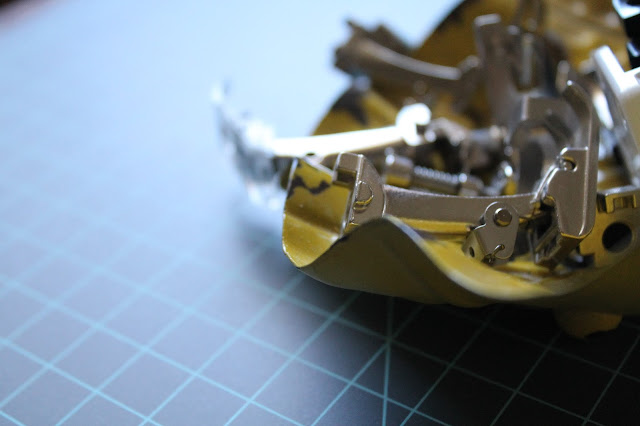5 Ways to Green Your Sewing
You've kicked the habit of disposable water bottles and bring your own bag every time you hit Joann's Fabric store. In many ways sewing itself can be the ultimate form of going green. It's an empowering skill set that allows you to alter, repair, and create garments or projects that can live on beyond our landfills. In honor of Earth Day, I want to share with you 5 ways you can green your sewing or sewing room today! If you have some spare time take an in-depth look at sewing green in my Guide to Sewing With a Conscious.
1. Reuse Storage Solutions
Baby food jars, Tupperware containers, take out boxes- they all offer easy and inexpensive storage solutions for your home studio. Not only do their clear sides make it easy to find what you need, but when grouped together their organizational appeal is easy to appreciate.
2. Source Reused & Repurpose Fabrics
Beyond hunting fabrics and repurposing clothing found at second hand stores the internet opens up a wide resource for sewists who want to use primarily reclaimed materials. Facebook Groups such as Free Design Material Group, Fabric Destash For People Who Aren't Cray Cray, and Instagrams #TheGreatFabricDestash are all fantastic ways to score materials or sell those you no longer need. www.fabscrap.org offers pick up services in NYC & sells designer/factory excess online. (@Fabscrap on Instagram) You might also be interested in using The Squirrelz App which allows you to post/find excess design materials. Creative Reuse Centers are popping up around the country & around the world- see if there's one in your community!
3. Zero Waste: Sew Your Scraps
Snips and snibbles of fabric as small as 1/4" can be repurposed- you just need a little inspiration! Need a few ideas? Scrap Fabric Society on Pinterest
4. Know Your Fabric
Try to stick with sustainable, organic cotton, wool, hemp, and/or fabrics made from recycled elements. Fabric should be locally produced if at all possible, and either undyed or printed with low-impact pigments. Don't forget to look for green notions to complete your sewing project. Thread, zippers, bindings, and even quilt batting come in environmentally safe versions, as well.
5. Recycle What You Can't Reuse
Replaceable rotary cutter blades are recyclable. Check out The LP Sharp Company. They exchange blades for new ones at a fraction of the cost. Their return program allows you to send in (minimum of 5) blades any brand, size, or condition in exchange for Olfa brand or generic rotary cutter blades.
Plastic thread spools are #6 plastic and can be recycled in most municipalities.
Fabrics & scraps can be sold & given away to friends or on groups listed above. TrashN2Tees clothing recycling offers mail in options as well as drop off locations around the country.
These are just a few ways you can green your sewing craft. What other ways can we be environmentally conscious in our sewing? Leave your suggestions in the comments below.







I'm so excited to learn that thread spools are #6! I've got a huge box I was trying to figure out how to repurpose (for years). This makes saying goodbye so much easier. Thank you!
ReplyDelete